Overview
-
Jump To Details
![Duolingo]()
Duolingo
Best Free Language App -
Jump To Details
![Lingoda]()
Lingoda
Best for Group Classes -
Jump To Details
![Sign It ASL]()
Sign It ASL
Best for Sign Language -
Jump To Details
![Fluenz]()
Fluenz
Best for Instructor-Led Videos -
Jump To Details
![Rosetta Stone Language Learning]()
Rosetta Stone Language Learning
Best Paid App for Beginners -
Jump To Details
![Babbel]()
Babbel
Most Challenging -
Jump To Details
![Pimsleur]()
Pimsleur
Best for Audio-Based Learning -
Jump To Details
![Transparent Language Online]()
Transparent Language Online
Best for Hard-to-Find Languages -
Jump To Details
![Yabla]()
Yabla
Best for Videos in the Native Language
What language do you want to learn? Have you already learned a little, or are you starting from scratch? I've been testing language learning software for more than a decade. In addition, I've studied four languages formally at the Foreign Service Institute, with private tutors, using all the major online programs, and at universities. Based on years of testing, five apps stand out as Editors' Choice winners: Duolingo offers the most full-featured free experience, Fluenz embraces instructional learning, Lingoda excels for its small online classes, Rosetta Stone best targets beginners, and Sign It ASL teaches American Sign Language better than anything else. But you should read on for more top picks that might suit you better, along with a guide to help you pick the best language app for your needs.
You Can Trust Our Reviews
Deeper Dive: Our Top Tested Picks
-
![Duolingo]()
Duolingo
Best Free Language AppWhy We Picked It
Duolingo is by far the best free language learning app. And It would still be among the best even if you had to pay for it—which you can do with Duolingo Super. That subscription unlocks an ad-free experience, a special mode for practicing your mistakes, and other perks. But what makes Duolingo so good? Its content is very strong, and the app design makes it easy to pick up and practice for a few minutes per day or sit down for longer study sessions. We also love Duolingo's podcasts and Stories feature for the languages that have it.
Who It's For
Ideal for beginner or intermediate students, Duolingo lets you learn more than 30 languages for free. It's also available on all major platforms, including mobile devices.
-
Pros
-
Cons
Learn More Duolingo Review -
-
![Lingoda]()
Lingoda
Best for Group ClassesWhy We Picked It
Lingoda offers small group and one-on-one classes via Zoom for very reasonable prices. More importantly, however, the classes are highly structured. You get PDFs of all the materials before the class, which the instructor works their way through. What Lingoda offers is completely different from tutoring, in which a student often brings up topics they want to practice or learn. With Lingoda, students work their way through all the classes at a particular level before advancing to the next one.
Who It's For
Lingoda is one of the very few online language learning programs that's appropriate for beginner, intermediate, and advanced students. If you've studied a language for several years but need so-called maintenance classes, Lingoda will do the trick. It's also suitable if you're just starting out with a language, as long as you commit to practicing by yourself. We don't recommend using only Lingoda if you are a new speaker. Pair it with another class or learning app to get the best results.
-
Pros
-
Cons
Learn More Lingoda Review -
-
![Sign It ASL]()
Sign It ASL
Best for Sign LanguageWhy We Picked It
We tested quite a few apps and websites for learning American Sign Language, and Sign It ASL is easily the best. Working through a lesson feels a little like watching a television show because characters in the segments essentially perform short skits in ASL with narration and closed captioning to help you learn. Interactive sessions for practicing and quizzing yourself follow each skit. Sign It ASL does a wonderful job of conveying a lot of information about culture, etiquette, and other aspects of ASL that are essential to learning this language.
Who It's For
Sign It ASL is for teen and adult learners looking to learn American Sign Language. Because Sign It uses both narration and closed captioning, you can be hard of hearing or deaf and use this program. You can also be hearing. The app is also appropriate for parents and family members of deaf infants and very young children who will need adult support in acquiring the language as they grow. There's even a special application process for those parents to get Sign It ASL for free. The team that makes Sign It ASL has programs and YouTube videos for young children learning ASL, too.
-
Pros
-
Cons
Learn More Sign It ASL Review -
-
![Fluenz]()
Fluenz
Best for Instructor-Led VideosWhy We Picked It
If Rosetta Stone didn't click for you, Fluenz is the best alternative. It's just as good at teaching beginners and intermediate students what they need to know about a language, but the approach is completely different. With Fluenz, you get a virtual instructor in short, class-style videos. Then, you move into interactive practice modules, which are tougher than Rosetta Stone's because they don't enforce the deductive method of learning.
Who It's For
If you learn better with a teacher than with a game-like app, try Fluenz. Just keep in mind that it doesn't offer too many languages: Chinese (Mandarin with Pinyin only), French, German, Italian, Portuguese (Brazilian), Latin American Spanish, and European Spanish.
-
Pros
-
Cons
Learn More Fluenz Review -
-
![Rosetta Stone Language Learning]()
Rosetta Stone Language Learning
Best Paid App for BeginnersWhy We Picked It
Rosetta Stone is one of the best programs for learning a language, especially for beginners. It excels at introducing new words and basic grammar (such as conjugation and agreement) at just the right time and in a compelling way. It also does an excellent job of getting you to commit to learning and studying for about 30 minutes per day with its wonderfully clear and structured lessons.
Who It's For
When you're just getting started with a new language and are still uncomfortable with it, nothing quite beats Rosetta Stone. Once you know a language well enough to converse a little and read with some fluidity, however, you're probably beyond what it has to offer.
-
Pros
-
Cons
Learn More Rosetta Stone Language Learning Review -
-
![Babbel]()
Babbel
Most ChallengingWhy We Picked It
Babbel offers unique, high-quality content for 13 languages, along with affordable live classes for English, French, German, Italian, and Spanish. It covers reading, listening, speaking, and writing thoroughly enough that you will need to take notes and reference them as you go. The lessons might feel dull, but they are among the most rigorous we've come across and really push your comprehension. For a change of pace, you can try learning with Babbel's tailored podcasts.
Who It's For
Choose Babbel if you are looking for a challenge. It won't hold your hand or even let you progress until you get an exercise correct. Its live classes are also an exceptional value.
-
Pros
-
Cons
Learn More Babbel Review -
-
![Pimsleur]()
Pimsleur
Best for Audio-Based LearningWhy We Picked It
Pimsleur uses a unique teaching method from Dr. Paul Pimsleur (the namesake for the program). The Pimsleur method introduces you to words and concepts, has you repeat them, and then waits a specific amount of time before asking you to recall them. The idea is that these timed intervals between moments of learning and recall strengthen your memory. Pimsleur courses have great content, too.
Who It's For
If you have a difficult time adjusting your pronunciation for a new language, Pimsleur is exceptional. It gives you the opportunity to hear words and practice saying them before you see them. The app is also ideal if you prefer audio-based learning or need to practice a language while multitasking. It has courses for beginner, intermediate, and advanced students.
-
Pros
-
Cons
Learn More Pimsleur Review -
-
![Transparent Language Online]()
Transparent Language Online
Best for Hard-to-Find LanguagesWhy We Picked It
If you need to learn a language that other apps don't teach, try Transparent. It specializes in courses and lessons for boutique and hard-to-find languages. The amount of content for languages varies greatly, however. Transparent is better than some other language apps in terms of its speaking and listening exercises, though it is also more expensive and challenging.
Who It's For
Check out Transparent Language if you can't find the language you need to learn anywhere else. The only other app that offers close to as many languages is Mango Languages, but it's not nearly as good overall.
-
Pros
-
Cons
Learn More Transparent Language Online Review -
-
![Yabla]()
Yabla
Best for Videos in the Native LanguageWhy We Picked It
Unlike most other language learning apps, Yabla takes a video-first approach. Diving into its material is more like going to YouTube than cracking open a textbook. Some videos are in the style of a language lesson, but many others are just interesting content—cooking segments, music videos, travel shows—in the language you're learning. What makes Yabla different from YouTube is the interactive questions you can answer after you finish a video to test your comprehension.
Who It's For
While Yabla has some content for beginners, it's best for intermediate and higher-level speakers. It's a refreshing option if you are tired of other language apps that drill you with the standard grammar, listening, reading, speaking, and writing lessons.
-
Pros
-
Cons
Learn More Yabla Review -
Buying Guide: The Best Language Learning Apps for 2025
What Is the Best Language Learning Software?
The best app for learning a foreign language depends on your needs and goals. Apps and online services let you learn at your own pace and in spaces where you're most comfortable. The trick is figuring out what you need to work on at different stages.
When you first start out, you might like a program that tells you exactly what to study for an intensive 30 minutes per day. Rosetta Stone and Fluenz are both exceptional at that. Add in a mobile app with more bite-sized content so you can refresh your memory in short bursts. Duolingo is especially good for practicing on the go, as is Quizlet. Quizlet isn't a language app per se, but it helps you create study sets (essentially groups of flash cards) and works exceptionally well for foreign language learning.
Some language learners find that looking at written language trips up their pronunciation. In that case, you might be better off starting with an audio-focused program, such as Pimsleur or Michel Thomas. Between the two, Pimsleur rates higher in our testing.
If you're already an intermediate or advanced speaker, self-paced apps alone won't be challenging enough. You should add a small group class lesson or one-on-one tutoring. Lingoda has small one-hour classes and one-on-one sessions; they're exceptional and happen over Zoom. Another place to get human instruction is Rype, which focuses on one-on-one tutoring in 30-minute sessions. Not quite ready to converse? Try Yabla, a site flush with videos of native speakers that can help you acclimate your ear and expand your vocabulary.
Sometimes, you need resources that are specific to the language you're learning. For example, if you are studying American Sign Language, you really need either a live instructor or videos. Sign It ASL, an online course that offers TV-show-like video lessons, is the best we've tested for that language.
Similarly, for languages with a script that's new to you, it's best to find an app that includes content for teaching reading and writing. In some cases, you might pick up two apps, one that focuses solely on reading and writing and another that teaches speaking and listening. There are plenty of apps that teach just writing for Arabic, Chinese, Hindi, Japanese, Korean, Mandarin, and other non-Roman scripts.
How Do You Learn Language Best?
One of the hardest parts about learning a different language is that if you are succeeding 100% of the time, it's not difficult enough. If it's too easy, you're not learning. That's uncomfortable for many people, but it's another reason you need to explore all your options and language learning apps and resources that match your skill level.
Podcasts are a great way to push yourself beyond your comfort zone. Babbel and Duolingo both have good podcasts. If you can understand about 80% of what's being said, that's right where you should be. If you're not into podcasts in the first place, you might get frustrated and give up.
A few apps, including Lingoda, offer placement tests so you can find out which level is the most appropriate for you to start.
What Is the Best Free Language Learning App?
The best free app for learning a language is Duolingo, hands down. We recommend it enthusiastically, no matter your level or language goals, as it has just about everything. You won't become fluent using just Duolingo, but it's excellent for helping you study and keep up your skills.
It's available as both a web and mobile app, and it works well whether you're a total beginner or already have experience. You can study as many languages as you like with Duolingo. It has more than 30 languages with instruction in English, as well as more options if you prefer a different language of instruction.
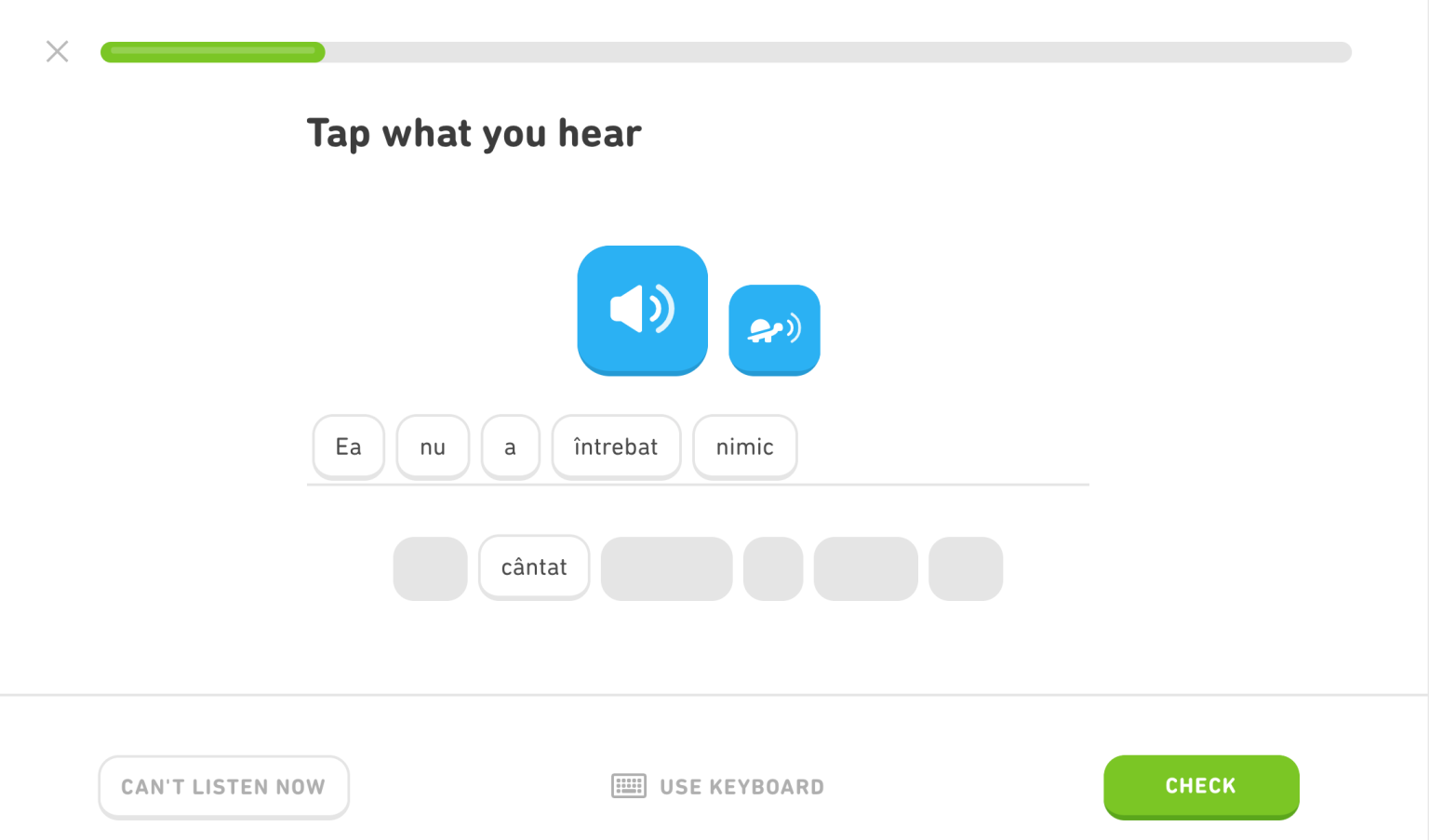
If you're not a beginner, Duolingo lets you take a placement test to find the right place to start. It also makes it easy to practice specific skills because its lessons focus not only on vocabulary themes (such as family or hobbies) but also on verb tenses and grammatical rules (such as past imperfect or dative case).
You can practice exercises in short bursts or explore content for intermediate and advanced speakers, including Stories and podcasts, which are available only for some languages. Duolingo also has some gamification aspects, so you can set a goal for yourself and compete against others. The more you hit your goal, the more bonus points you earn. You can support the company by paying for a Super Duolingo account, but it's not necessary to get everything this app has to offer.
Is Rosetta Stone Worth the Price?
Rosetta Stone is the most polished language-learning app, with plenty of extras. Among paid programs, it continues to be one of our top picks alongside Fluenz. Rosetta Stone is often on sale, so you can expect to pay less than the list price to get it. If you and your family members study multiple languages often, the Lifetime membership is a good deal because it gives you access to all of Rosetta Stone's languages for your lifetime for one flat rate.
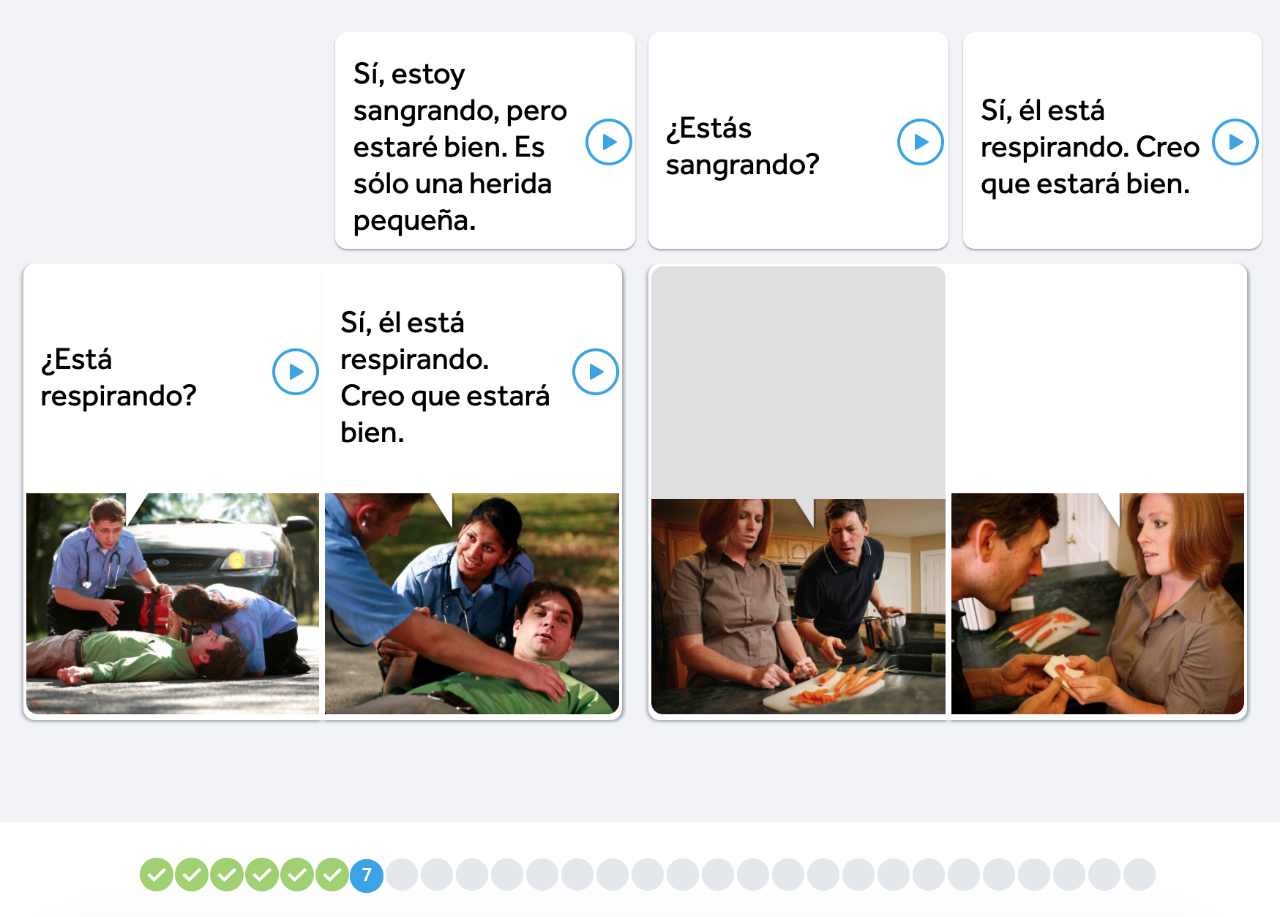
Rosetta Stone is accurate, thorough, and reliable; it covers more than 20 languages. We like its rigor, especially for beginners. You know what to do every day, and you can plan to spend about 30 minutes completing your lesson. If you follow this routine, Rosetta Stone has enough content to keep you busy for months. Again, you won't become fluent in a language using only Rosetta Stone, but it's superb for helping you build a foundation for future learning.
The Best Language Software With a Virtual Teacher
Some learners do best when they have an instructor to guide them. When you're starting with a language, seeing another human being speak it, watching their facial movements, and seeing their smile can make it feel less intimidating. Fluenz gets it. This program uses videos of a teacher to introduce new lessons and review concepts, then follows them up with interactive learning exercises and quizzes. It's as rigorous as Rosetta Stone but uses a completely different approach that you might prefer.

As Fluenz progresses, the instructor walks you through lessons in pronunciation and grammar and culture, too. If you learn best when you see a familiar face, Fluenz is a great option.
Fluenz offers seven language courses: Chinese (Mandarin with Pinyin writing only), French, German, Italian, Portuguese (Brazilian), Latin American Spanish, and European Spanish.
The Best App for Group Classes and Speaking Practice
Lingoda is our top pick for live, video-based group classes designed to get you speaking. With Lingoda, you take a placement test and then commit to a package of classes, which you pay for up front. Classes take place over Zoom and are limited to five students. One-on-one sessions are also available for a higher per-class cost.
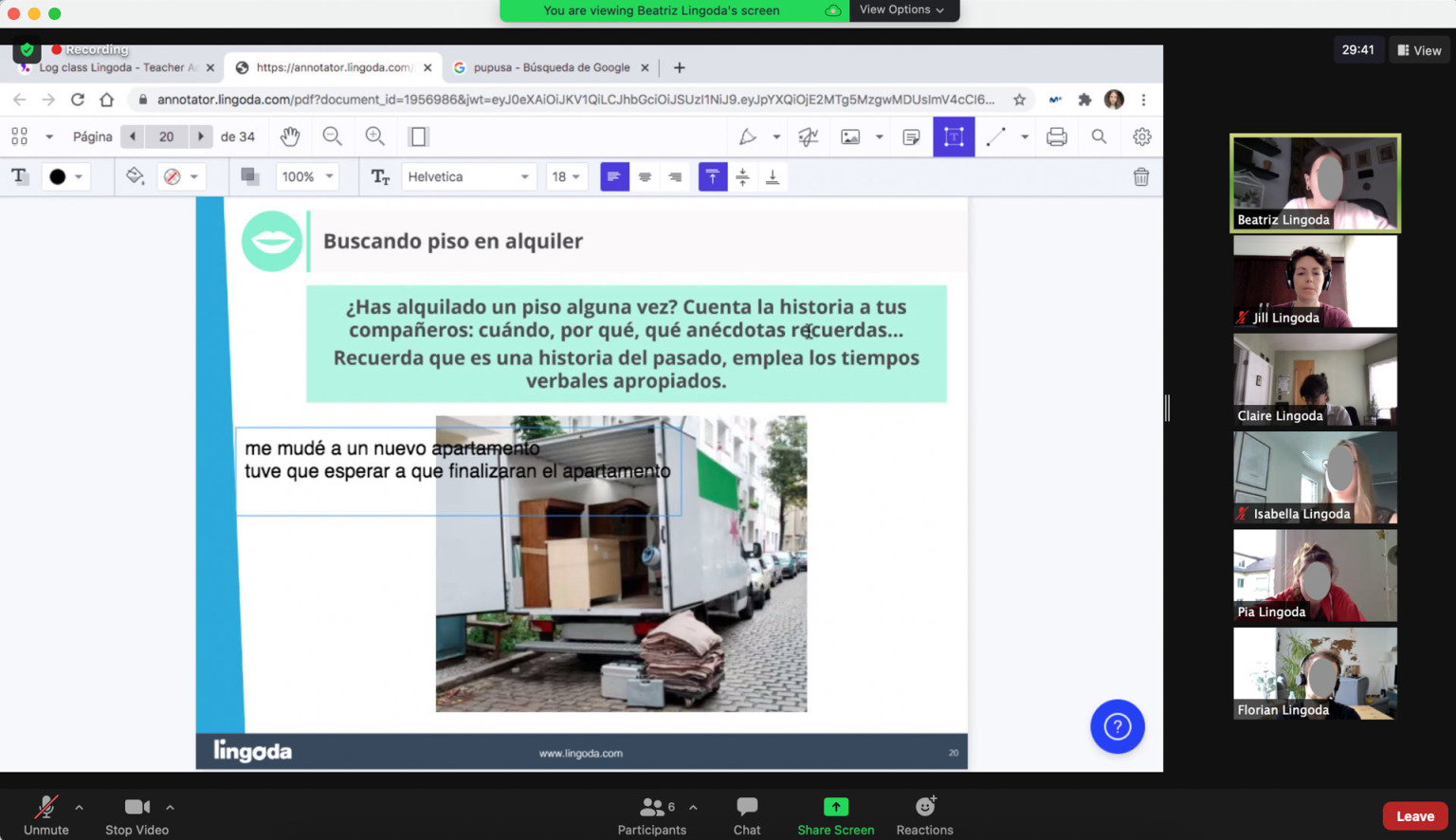
Lingoda's curriculum and levels are based on the Common European Framework of Reference for Languages (CEFR). Lingoda offers classes in French, German, Spanish, English, and Business English.
What Is the Most Challenging Language Instruction App?
One app stands out for having lessons that are harder than others: Babbel. While testing this app, you might need a notebook by your side to fill with words and phrases just to keep up. Not everyone can jump into tough language-learning content, but some people can and like it. In particular, people who already speak three or four related languages might find that some programs are too slow for them. That's when Babbel is worth trying.
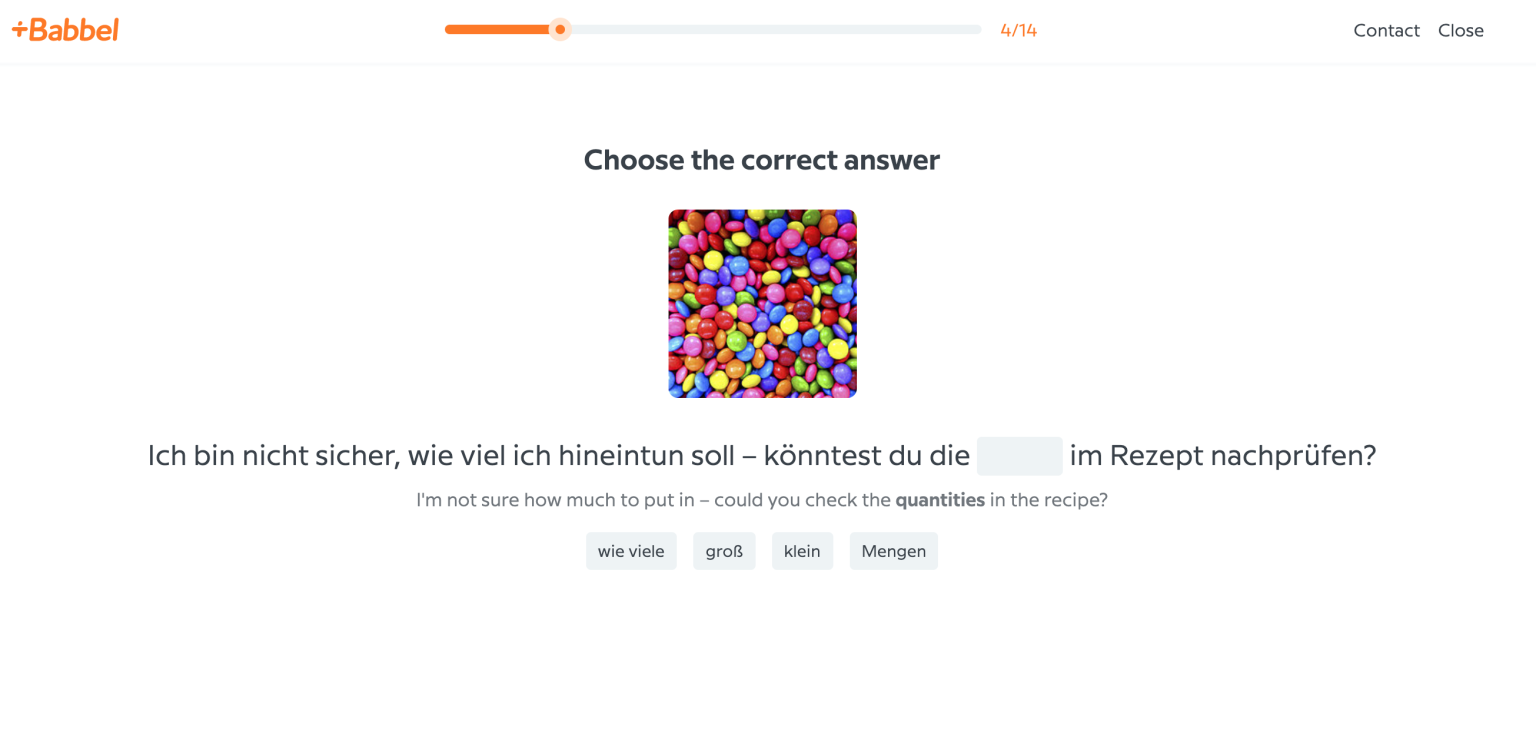
Babbel has 13 languages, assuming your language of instruction is English. You can learn Danish, Dutch, French, German, Indonesian, Italian, Norwegian, Polish, Portuguese (Brazilian only), Russian, Spanish (Latin American or European), Swedish, and Turkish. There's also a course for learning English, with instruction available in French, German, Italian, Polish, Portuguese, Spanish, and Swedish.
The Best Language App for Intermediate and Advanced Speakers
If you've studied a language before and find that most language learning apps are too easy, you might want to try an app that gives you movies and TV shows in your target language, along with tools to help you learn the words, phrases, and expressions that are new to you. Two good apps offer this: Yabla and Lingopie. Both let you watch videos with the option to show closed captioning in the native language as well as English subtitles. You can look for content from a particular country or region if you're trying to acclimate your ear to a certain dialect or accent.

What makes them different? Yabla teaches six languages: Chinese, French, German, Italian, and Spanish, plus an English program for Spanish speakers. When you sign up, you choose just one language. Lingopie has six languages as well (French, Italian, German, Portuguese, Russian, and Spanish). When you pay for an account, you get access to all the content in all the languages. Yabla has more interactive exercises for practicing the new words you learn, and in terms of genre, it offers both instructional learning videos and entertainment. Lingopie has only entertainment—no lessons on grammar or anything else—and only flashcards for interacting with new words you learn along the way.
The Best Audio-Focused Language Apps
If you're the kind of person who enjoys podcasts and audiobooks, consider an audio-focused language learning program. Two that stand out are Pimsleur and Michel Thomas. Each takes the name of the person who created the learning technique it uses. Both were sold as tapes, then as CDs. Now, they are available as apps.
Pimsleur uses Dr. Paul Pimsleur's spaced repetition method. In other words, the program uses specific intervals of time between when you first learn a word and when it asks you to recall it to maximize language retention. Each lesson takes about 30 minutes, and you're supposed to do exactly one lesson per day. For select languages, you get interactive exercises.
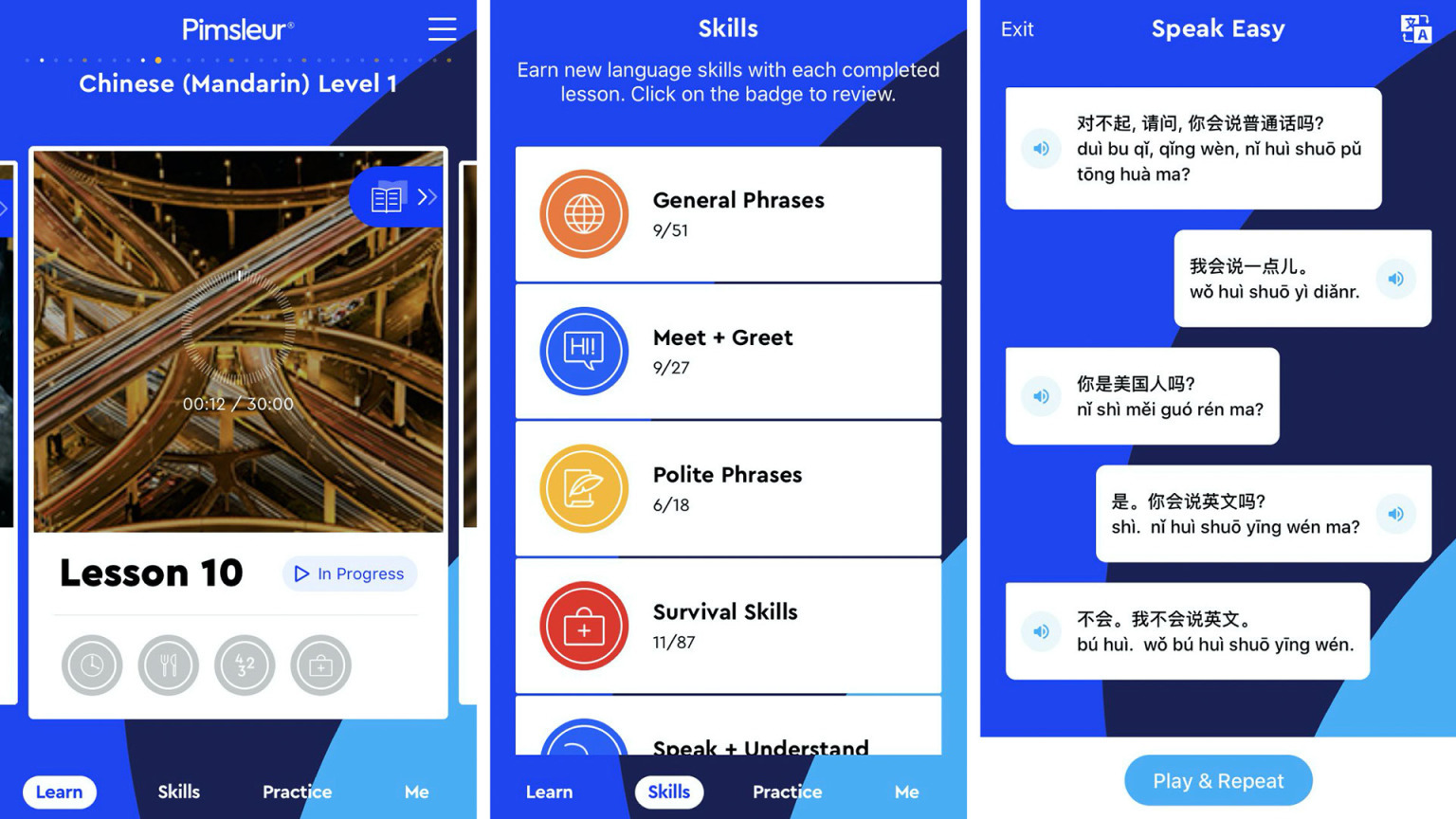
The Michel Thomas app uses a different method. Michel Thomas was a polyglot who developed a method of informal teaching. It involves putting people into a classroom and teaching them words that they could use as building blocks. That way, you get to speaking quickly and can mix and match the words you've learned to say in several sentences. When you buy the Michel Thomas program, you hear the recording from one of these classrooms, and you're supposed to play along as if you were there in person.
The Best Apps for Hard-to-Find Languages
Most language-learning software is available for French, German, Italian, Portuguese, and Spanish. What do you do if you need to learn Igbo or Ojibwe?
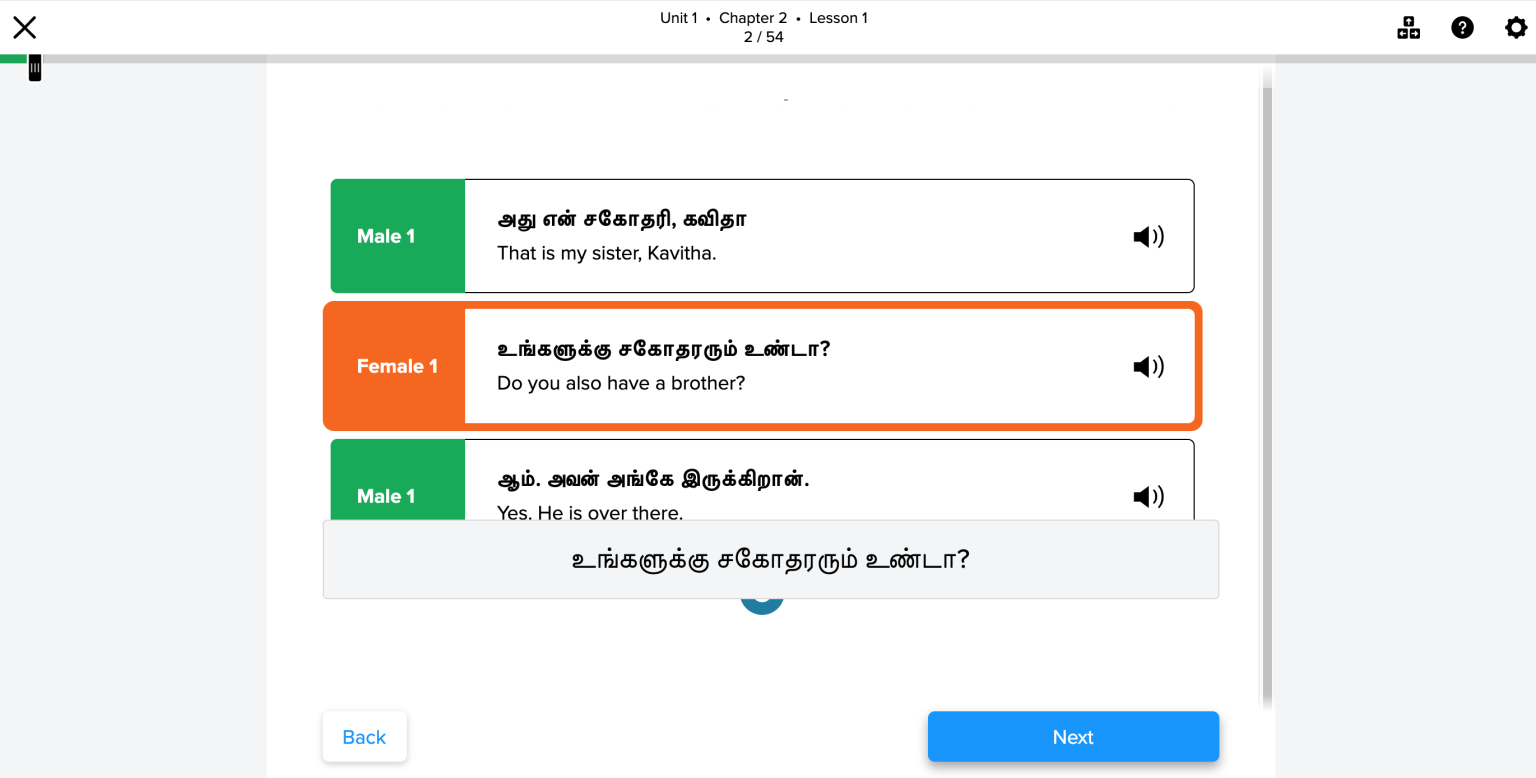
When you're in a bind to find an app for a language you want to learn, there are two sources to try: Transparent Language Online and Mango Languages. Transparent has programs for more than 100 languages. Some of those programs are short, but the company adds to them over time. Mango Languages is an option if you're stuck, though it's not an app we highly recommend. For some languages, however, it might be your only option.
The Best App for Learning ASL
There are several good apps for learning American Sign Language, but the absolute best is Sign It ASL. This app teaches everything from fingerspelling to culture, etiquette, and grammar.
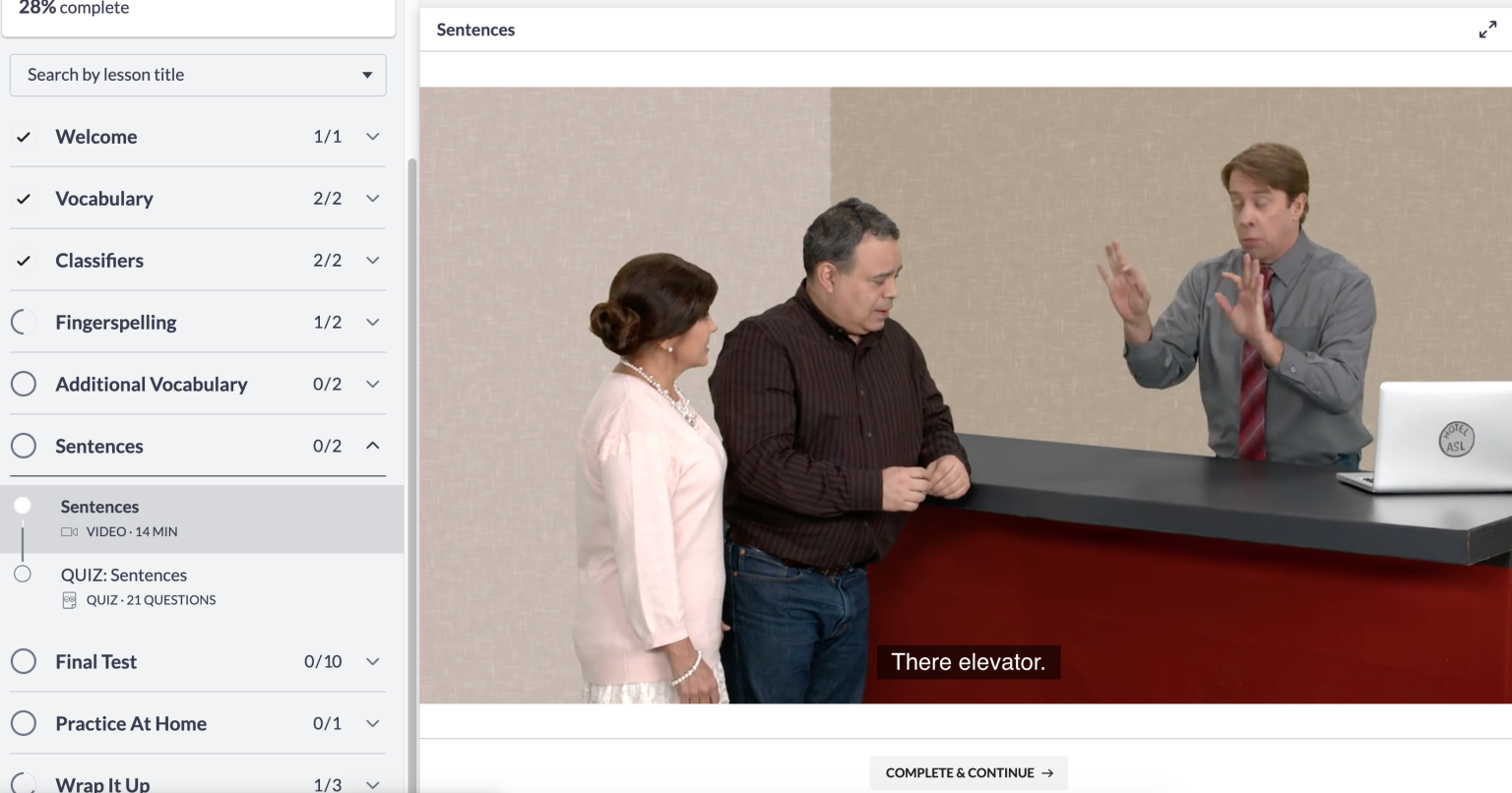
As you might guess, Sign It ASL is entirely video-based. Its content is prerecorded and professional. You get a lot of information in relatively long (up to an hour) lessons that are entertaining and engaging.
Make Sure Your Apps Are Tough Enough
However you choose to learn a language, stick with it! Don't be afraid to change the app you use as you progress. When an app feels too easy, it's time to stretch yourself in new ways.
If you're looking to learn something other than a language, from coding to sewing, see our roundup of the best online learning services.



























